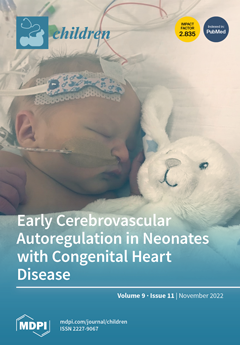Despite its well-documented benefits, breastfeeding rates and duration worldwide do not meet the recommended goals set by the World Health Organization. Data on infant feeding, socio-demographic, lifestyle and perinatal factors were used from 490 mothers (and 958 children), participants at the Hellenic National
[...] Read more.
Despite its well-documented benefits, breastfeeding rates and duration worldwide do not meet the recommended goals set by the World Health Organization. Data on infant feeding, socio-demographic, lifestyle and perinatal factors were used from 490 mothers (and 958 children), participants at the Hellenic National Nutrition and Health Survey between 2013–2015. Clustered multiple logistic regression and multilevel mixed-model regression analyses were performed to identify factors associated with breastfeeding initiation and duration, respectively. Maternal lower education [Odds Ratio (OR): 2.29, 95% Confidence intervals (95% CI): 1.30–4.04;
p = 0.004], smoking during pregnancy (OR: 3.08, 95% CI: 1.64–5.77;
p < 0.001), caesarean section (OR = 3.26, 95% CI: 1.83–5.83;
p < 0.001), prematurity (OR = 2.74, 95% CI: 1.40–5.37;
p = 0.003) and higher birth order (OR = 1.30, 95% CI: 1.04–1.62;
p = 0.020) were associated with increased odds of not initiating breastfeeding. Living in rural areas [beta coefficient
b = −27.93,
p = 0.043], smoking during pregnancy (
b = −64.47,
p < 0.001), caesarean section (
b = −28.76,
p = 0.046) and prematurity (
b = −46.67,
p = 0.048) were significantly associated with shorter breastfeeding duration. Children born chronologically closer to the survey were more likely to breastfeed and for longer periods. Educational promotion and enhancement of breastfeeding awareness that account for maternal exposures are required. Prevention of prematurity and avoidance of unnecessary caesarean section is crucial, while additional breastfeeding support is needed when preterm birth occurs, or caesarean section cannot be avoided.
Full article






